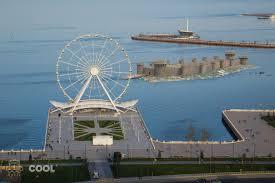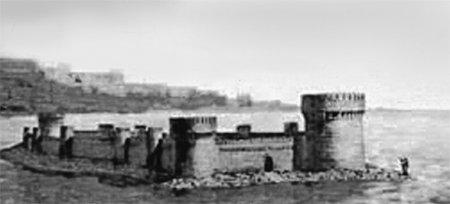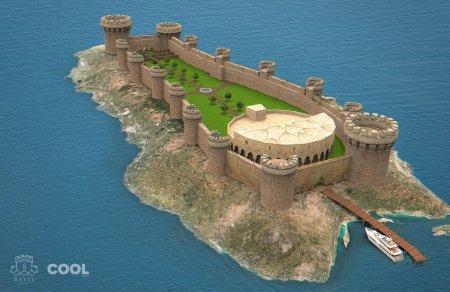Submerged ruins of Bayil Fortress

By Naila Huseynli
The remains of Bayil Castle, also the castle known as lost fortress, are visible as a small island in the shore of Baku.
The mystical castle was constructed under architect Zejnaddin ibn Abu Rashid Shirvani in accordance with the order of Shirvanshah Fariburz III, in 1232-1235, in order to protect Baku from the sea. Later, it became Bayil Castle, also known as Sabayil Castle, Shakhri Saba, Shakhri Nau, "submerged city", or "Bayil Stones".
Azerbaijani historian Bakikhanov said that there is a stone-lined road below the sea surface. Constellations, walls and 72 gravestones approve that an ancient city founded 400-500 years ago drowned in water. The Russian geologist Gubkin said that one of the reasons of drowning of this city is related with a strong and destructive earthquake in the southern part of the Caspian Sea in 1306.
In the painting of the German traveler Kempher, the scattered tops of several constellations appear in the bottom of the water near the end of the wall of the castle extending to the sea.
Over the 100 past years, sea level fluctuated significantly. The castle has been drowned due to the expansion of the water, and the remains of the castle appeared with the decreasing of sea level. At present, only a small bit of the fortress is visible from the coastline.
During excavations, the foundations of nine buildings were found. The western wall is adjacent with the destroyed platform, and the basis of the central tower which was used simultaneously as a watchtower and a lighthouse. Researchers also believe that there was a temple belongs to fire-worshippers. The upper parts of the fortress are completely destroyed, only the bottom parts of the wall have survived.
Throughout the first investigation in the construction in 1939, the coin with the name of Shirvanshah Fariburz III was found in the constellations.
Inscriptions in Arabic and Farsi, images of human faces and imaginary animals were illustrated along the entire upper part of the Bayil Castle. The total length of the wall is about 400 meters. Moreover, the figures of various animals designate the years of Shirvanshah rulers and the text which is the genealogy of Shirvanshahs Mazjadids dynasty, described in the images of crowned busts. The historians also believe that it is first time that figure of animals and the images of human face were described in the Muslim Monument. Recently, the inscriptions are held in the courtyard of the Shirvanshah Palace.
The remains of this historical monument were included in the list of Cultural Heritage of UNESCO, which is in Need of Urgent Conservation, on October 24, 2001.
---
Follow us on Twitter @AzerNewsAz
Here we are to serve you with news right now. It does not cost much, but worth your attention.
Choose to support open, independent, quality journalism and subscribe on a monthly basis.
By subscribing to our online newspaper, you can have full digital access to all news, analysis, and much more.
You can also follow AzerNEWS on Twitter @AzerNewsAz or Facebook @AzerNewsNewspaper
Thank you!


